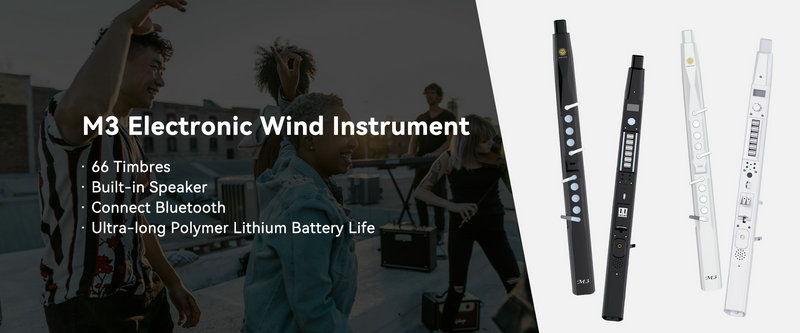Wind synthesizers operate on a combination of breath control and electronic signal processing to produce sound. Here's an overview of how they work:
Breath Input:
The player blows into a mouthpiece, which is similar to that of a traditional wind instrument. This action provides the primary control over the sound's dynamics and expression.
Breath Sensor:
Inside the mouthpiece, a breath sensor detects the airflow and translates it into electronic signals. The strength and pressure of the breath can affect the volume and other characteristics of the sound.
Keypads and Fingerings:
The wind synthesizer has a set of keys or pads that correspond to the fingerings of a wind instrument. These are used to play different notes and can also be used for techniques like trills, bends, and vibrato.
MIDI Signal Generation:
The combination of breath input and keypad fingerings generates MIDI signals, which are a standard protocol for communication between musical instruments and other devices.
Sound Synthesis:
The MIDI signals are sent to a sound module or a digital audio workstation (DAW) that contains the synthesizer engine. This engine processes the MIDI data to produce sound through its internal samples or synthesis algorithms.
Sound Modification:
Many wind synthesizers have built-in sound modification capabilities, such as filters, reverb, and other effects, which can be adjusted in real-time by the player.
Audio Output:
The synthesized sound is then output through a speaker or headphones. Some wind synthesizers have built-in speakers, while others may require external amplification.
Connectivity:
Wind synthesizers can be connected to external devices via MIDI or USB, allowing for integration with other music equipment and software.
Expression and Control:
Players can control various aspects of the sound, such as pitch bend, modulation, and articulation, through breath control and the use of expression pedals or other controllers.
Programmability:
Advanced wind synthesizers often allow users to program and save custom settings, sounds, and performance parameters.
Wireless Capability:
Some models offer wireless connectivity, which can be beneficial for live performances by reducing the need for cables.
Wind synthesizers provide a bridge between traditional wind instrument techniques and modern electronic music technology, offering musicians a wide range of creative possibilities for sound production and performance.
SUNRISE MELODY M3 Electronic Wind Instrument - The best-selling digital wind instruments
. 66 Timbres
. Built-in Speaker
. Connect Bluetooth
. Ultra-long Polymer Lithium Battery Life



